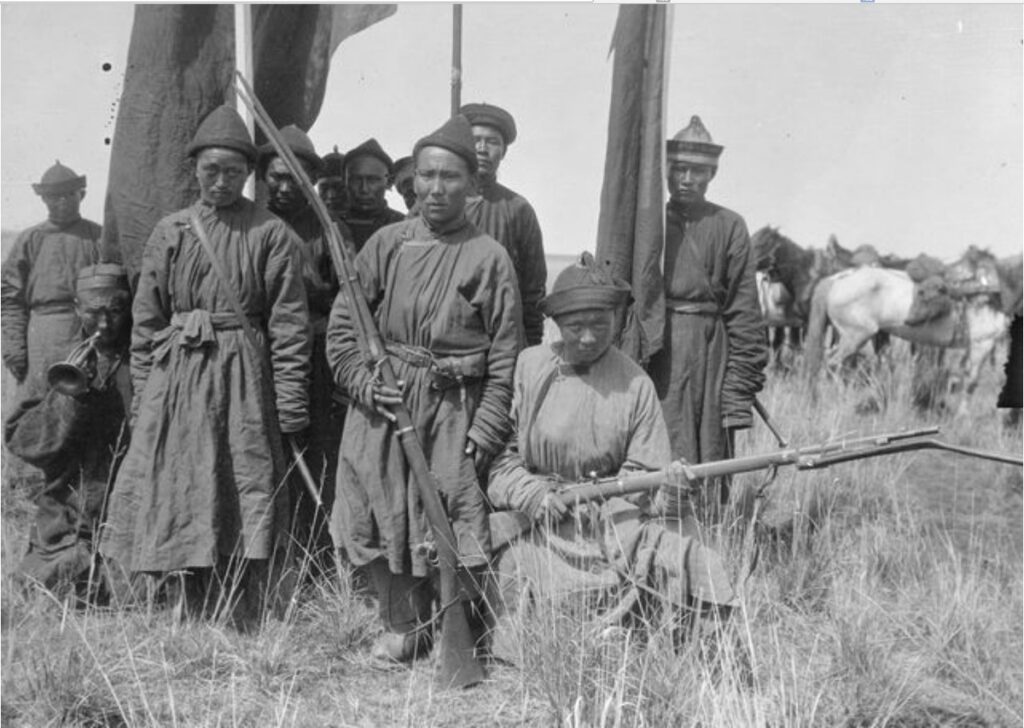Genghis Khan’s empire collapsed long ago and sank into oblivion. However, the descendants of his warriors still live among us. And in order to meet them, it is not necessary to go to faraway Mongolia. After all, two relatively large Mongolian peoples live in modern Russia at once. These are the Buryats and Kalmyks. And, if the first of these ethnic groups remained in the Asian steppes, the second one overcame thousands of kilometers and found a new homeland on the shores of the Caspian Sea. And this story of finding a new fatherland is vivid, dramatic and, despite its relative short duration, eventful. It is especially interesting to consider the interactions of the young Kalmyk people with their new neighbors.
A friend of the Kalmyk steppes
From the point of view of ethnographic science, the Kalmyks are a Mongolian people. Historically, they were characterized by all the same realities of material culture as other peoples of their group: a nomadic lifestyle and an absolute emphasis on cattle breeding in the field of farming. By the time they began their long journey, they lived in the territory of Dzungaria, in Central Asia. At the border of the XVI-XVII centuries, the region became restless and the people, in fact, were divided into three large groups. The first of them chose to stay in their native place and later became the basis for the formation of the Dzungarian Khanate, a state that had long disappeared from the maps, but was strong in the XVII century. The second large group of nomads withdrew from their places and migrated to China. The third moved to the Russian Kingdom and gave rise to the people that we know today by the word «Kalmyks».
It is difficult to say what exactly pushed the steppe people to such a long and potentially dangerous transition. Probably, the reasons for their wanderings should be sought mainly in the economic sphere: the steppes of Dzungaria became too cramped for the growing livestock, so the riders went to look for a better share in a foreign land.

Initially, their neighborhood with other peoples was not calm: they clashed with local nomads for places on pastures, attacked Cossack villages, but over time the tension gradually began to subside. Mongolian newcomers periodically swore allegiance to the Russian authorities, but also often refused this word. Despite its flighty nature, the Kalmyk cavalry proved itself very well during many Russian-Turkish conflicts and even during the Northern War with Sweden.
The entire period of active interaction of the Russian pre-revolutionary authorities with the Kalmyk nomads took place under the banner of conversion to Christianity. However, the Russian authorities did not succeed in this. To this day, the dominant part of the Kalmyk people professes their traditional religion – Buddhism.
Mass exodus of Kalmyks to China
In 1771, about half of all Kalmyks left their homes in the lower reaches of the Volga and went on a long campaign to China. There were several reasons for this: the Beijing authorities welcomed the resettlement of Mongolian horsemen to the territory of the country, and the Kalmyks also had strained relations with the Russian authorities. Not least because Catherine the Great pursued an overly aggressive policy of Christianizing foreigners.
This campaign proved to be a severe ordeal for the steppe people: the resettlement lasted for seven months, during which time the nomads were dogged by hunger and disease. The remaining steppes of southern Russia faced another problem: they lost a lot in numbers, and therefore they could not maintain their autonomy within the country. The Kalmyk Khanate as a unit within the empire was eliminated by Catherine, and the lands joined the Astrakhan province.

Interaction with the Don Cossack Army
A military foreman named Danila Efremov made a great contribution to the establishment of good-neighborly relations between the Kalmyks and the Cossacks. In 1722, the Kalmyk ruler died and the shadow of the troubles fell on the lands of the nomads. One of the potential heirs of the deceased (the Kalmyks themselves called their leaders by the word «Taishi») There was a Donduk-Ombo, with whom it was just possible to establish strong good-neighborly relations. In the middle of the XVIII century, this connection became even stronger: part of the Kalmyk uluses joined the Don army. After the mass exodus of Kalmyks to China, the process of their integration into the Cossack Don community only accelerated.
Rapidly losing numbers, the Kalmyks became an easy target for attack by aggressive neighbors: the mountain peoples of the Caucasus, Turkic nomads, etc. Therefore, they asked to be included in the Don army. Their requests were heard in 1794, and at that time a rather paradoxical cultural phenomenon was born. The so-called Kalmyk Cossacks arose, who were allowed to preserve their Buddhist faith, and they also retained a strong connection with the cultural tradition of their native Mongolia.
The Kalmyk Cossacks under the leadership of Ataman Platov performed exceptionally well during the Napoleonic Wars. And they surprised the French a lot by entering the defeated Paris on their short Mongolian horses with fighting camels. Having gone through many wars with the Don Cossacks, two very different and initially hostile peoples managed to unite and form a strange but very strong alliance, the memory of which is still strong.
